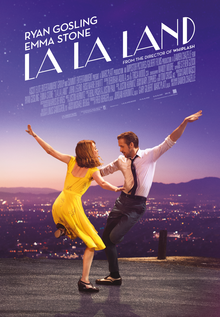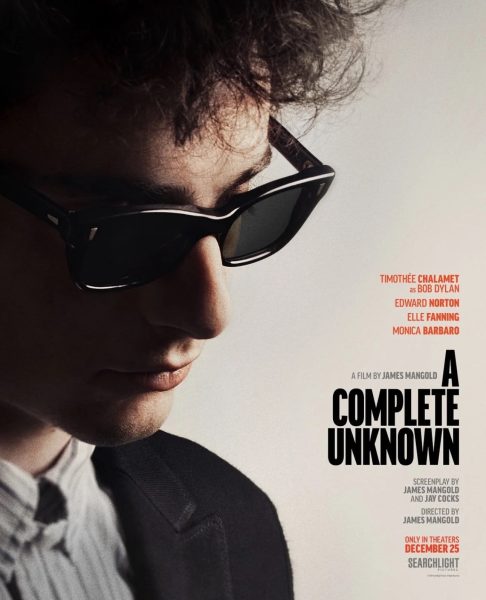La La Land: The movie that resurrected a genre
From Issue 5
The number 14. It’s a particularly lovely even number that is often considered lucky. It is a meticulously coveted and extremely rare number in the art of film, for it is the most Academy Award nominations any one film has ever received. All About Eve and Titanic were the only two to have ever accomplished such a feat, until Tuesday, January 24, 2017, when La La Land became the 3rd motion picture in history to do so. Now, there’s another number: 3. A Biblical number, a prime number, and, again, a lucky number.
Here’s another nice number for the reader: 7. One more pleasant, prime, Biblical, and lucky number. Also the record number of Golden Globes won by a single film, set on January 8, by none other than La La Land, breaking the previous record of 40 years set by One Flew Over the Cuckoo’s Nest. It was nominated for, and won all of the following: Best Picture (Musical/Comedy), Best Director, Best Original Screenplay, Best Actor (M/C), Best Actress (M/C), Best Original Score, and Best Original Song at the Globes, hosted by Jimmy Fallon, who opened the show with a parody of La La Land’s opening musical number. At the Oscars, which will be held on February 26, it will be the frontrunner in nearly all of its following nominative categories: Best Picture, Best Director, Best Actor, Best Actress, Best Original Screenplay, Best Original Score, Best Original Song (it has two nominations in this category), Best Cinematography, Best Costume Design, Best Production Design, Best Sound Mixing, Best Sound Editing, and Best Film Editing. The movie surpasses critical phenomenality, and bleeds into cultural: it peaked at #22 on IMDb’s Top 200 All Time List, which is decided by users. It has been the subject of an SNL skit, is #1 on the trending movies chart, and its soundtrack album peaked at #1 on iTunes.
So, we are beholding, this year, in our very midst, a cinematic masterpiece. A titan of films. The movie of the decade. A sizable, living, breathing, thriving piece of artistic history. But what is it?
La La Land is a romantic musical comedy-drama six years in the making. In brief, it centers around two aspiring artists, Mia, an actress, and Sebastian, a jazz pianist, as they fall in love and chase their dreams in Los Angeles. It is the brain-child of 31 year old director Damien Chazelle, and his Harvard roommate, composer Justin Hurwitz. Chazelle and Hurwitz were in a jazz band together when they had the idea, and Chazelle wrote the script for this jazz musical in 2010. When they moved to Los Angeles, their project was met with considerable reproach. No one thought an original musical (with no pre-existing fan-base) from a Hollywood newcomer would pan out. Jazz musicals were declared extinct.
After deciding to hold off on a $1 million budget offer with major restrictions from Focus Features, Chazelle pocketed the project. That is, until after the success of Chazelle’s Whiplash, a feasible $3.3 million film that earned 5 Oscar nominations. From there, 5 years after Chazelle wrote the script, Summit Entertainment and Black Label Media picked up the project, and the rest is history.
On a $30 million budget, with Emma Stone and Ryan Gosling in the leads, rehearsals took place for four months. Gosling spent his days in one room, learning how to play the piano; Stone spent her days in another with Mandy Moore, the choreographer. Every Friday evening, Chazelle screened classical movie musicals that inspired the project, for the entire cast and crew. Production took 40 days of meticulous work, which included activities such as blocking off an entire LA freeway for two days for a number that involved hundreds of cast members dancing on cars, and taking two days to film a scene only within the thirty minute “magic hour” sunset intervals in which Gosling and Stone tap-danced.
After production wrapped and an additional year of editing, the final product is a love letter to art. It is modern homage to classical movie musicals; musical numbers were shot in single, choreographed takes. Stone and Gosling have an on-screen chemistry that hasn’t been seen since Fred and Ginger.
Except there’s a reason those classic films that inspired this movie (The Umbrellas of Cherbourg, Singin’ in the Rain, Top Hat, Boogie Nights) weren’t nominated for 14 Oscars and never won any. La La Land is more than a convincing, gorgeous, nostalgic love story. What it truly is lies in the very title: La La Land. Our leads are first and foremost dreamers (in lalaland [and LA]), artists, attracted, pulled to each other by their desire and drive to achieve those dreams, their passions and their art. Every frame of the film not only emulates the inherent beauty of this endeavor; it tells it with honesty.
There is a true pain that accompanies this beauty in every moment, a pain that many would like to forget about, a pain that keeps many from pushing forward. It is the pain that grounds a dreamer in real life. The audience is introduced to this honesty in the first words sung in the entire movie: a young woman gets out of her car and begins lyrically lamenting the fact that she gave up a true romance and a whole life to be here, stuck in LA traffic, barely getting by, in the movie’s opener and one of the film’s most upbeat numbers, Another Day of Sun. But that’s just it! At the end of the day, this young woman and hundreds of other struggling artists, singing and dancing atop their parked cars on the freeway, believe that despite the sad minor undertone, these trade-offs and their dismal circumstances, pursuing the dusty mic and the neon glow are all they need; that, one day, to inspire people as they were so inspired will have been worth it; that, however sad, this is an ecstatic and undeniable calling; that they’ll get up off the ground, the morning will roll around, and tomorrow is another day of sun. This is the both the nuanced and blatant message of the film, seen in every frame, heard in every orchestration.
Now I say blatant because if we’re looking at plot points, Mia and Sebastian’s romantic relationship is a trade-off of the dream pursuit, and it is one of the truest, most beautiful romances an audience has ever seen, on par with Romeo and Juliet, Jack and Rose, Pyramus and Thisbe, a dream in of itself. Some would complain that Gosling isn’t the best singer and that Stone isn’t the best dancer, but those same people leave the theater with a smile across their mouths, and more joy in their hearts than they’ve ever experienced from a movie. Why? Because every time Mia and Sebastian break into song or dance, it is truly warranted. The audience believe that this actress and this pianist in front of them are so in love with each other, or so passionate about their dreams that there can be no other way for the film to continue unless they burst into song, or tap-dance in the street, or ball-room dance across the night sky, lifted off the ground. The film’s very genre is validated by its leads’ union: his passion is music, hers storytelling, bam, musical storytelling. Technical precision is far from necessary; it is all about the passion and its consequential, active beauty.
Anyway, their relationship is still a trade-off. In the last ten minutes of the film, Mia and Sebastian share a vision of what their lives would have been together, fives years after the main narration, in what is possibly the most beautiful, masterfully-crafted, heart-wrenching scene (with an equally moving score) in cinema history. But there’s a reason your chest tightens and you struggle to breathe and your whole body shivers and you grin from ear to ear, yet no tears come. After the “dream sequence,” you understand; they smile at each other. In this moment and the preceding scene, an expression of unfathomable love and gratitude is shared, slips between them, thanking each other for enabling one another to achieve their dreams, as he sits at his own piano in his own jazz club, as her performances play on screens across the world; thanking each other for their relationship; thanking each other for themselves; thanking each other for dreaming.
And now, as they part, they, the passionate artists and dreamers that they are, have something more beautiful and true and eternal than anything they could share presently. They have themselves engraved in an immortal, unbreakable, indestructible, shatterproof, adamantine memory. An undying song. An inextinguishable dance. Bright and enduring sensation and love and gratitude burning, like stars in a night sky, a whole city of them, tucked away in a place where they will never be harmed or tainted.
This is what they have of each other: their dreams. And there is nothing more pure or more everlasting or more sad or more true or more beautiful. And it is this that breathes new life into a dead genre, it is this that leaves your jaw dropped as the credits roll, it is this that puts joy in your heart and a smile on your face, it is this that makes you listen to the soundtrack on repeat, it is this that makes you see it again and again and again.
If you haven’t, go see this movie. If I can’t convince you, maybe the Oscars will; I can only hope. This film is for all people; its profundity exceeds race, age, gender, or any other category and can only be applied justifiably to all of humanity. So, please, treat yourself to the loveliest of nights, and go be someone in the crowd at the theatre; the only regret you’ll have is that you haven’t seen it already. 









